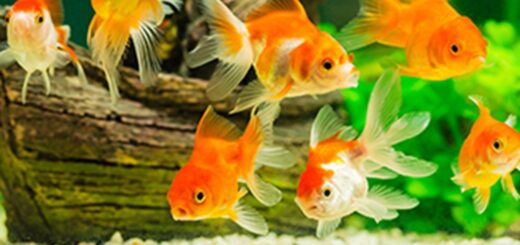Dealing With Common Fish Diseases: Identification And Treatment
In “Dealing With Common Fish Diseases: Identification And Treatment,” you will discover essential information on how to identify and effectively treat common fish diseases. Whether you are a beginner or an experienced fish owner, this article provides a comprehensive guide to help you understand the signs and symptoms of various fish illnesses. By understanding the causes and available treatments, you can ensure the health and well-being of your aquatic companions.
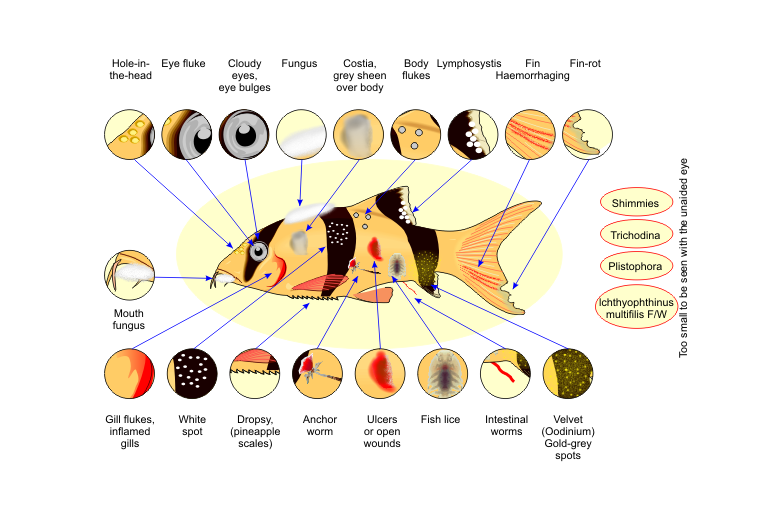
This image is property of www.bunnycart.com.
Click here…Your Spirit Animal is Trying to Connect…
Parasitic Fish Diseases
One of the most common types of fish diseases is parasitic infections. These diseases are caused by microscopic parasites that attach themselves to the fish’s body and feed on its blood or tissues. There are several types of parasitic fish diseases, each with its own symptoms and treatment options.
Ich (White Spot Disease)
Ich, also known as White Spot Disease, is one of the most well-known and widespread parasitic fish diseases. It is caused by a parasite called Ichthyophthirius multifiliis, which appears as small white spots on the fish’s body, fins, and gills. Infected fish may also show signs of itching, flashing, and clamped fins.
To treat Ich, it is essential to isolate the infected fish and treat the entire aquarium. Medications containing formalin or malachite green can be used to kill the parasites and eradicate the disease. Raising the temperature of the water can also help speed up the life cycle of the parasite, making it vulnerable to treatment.
Velvet Disease
Velvet Disease, or Oodinium, is another common parasitic fish disease. It is caused by a parasite called Piscinoodinium pillulare, which creates a yellowish or golden film on the fish’s body. Infected fish may show symptoms like lethargy, loss of appetite, and excessive mucus secretion.
Treating Velvet Disease involves using medications such as copper sulfate or a combination of formalin and malachite green. Quarantining the affected fish and treating the entire aquarium is crucial to prevent the spread of the disease.
Fish Lice (Argulus)
Fish lice, or Argulus, are external parasites that can cause severe damage to fish. These parasites are visible to the naked eye and appear as flat, oval-shaped crustaceans. Fish infected with fish lice may exhibit symptoms like rubbing against objects, scratching against the substrate, and frayed fins.
Removing fish lice from infected fish can be challenging due to their mobility. A combination of physical removal, such as tweezers or forceps, and medications like formalin or salt baths can be used to treat fish lice. It is essential to treat the entire aquarium to prevent reinfestation.
Anchor Worm (Lernaea)
Anchor Worm, caused by the parasite Lernaea, is another common parasitic fish disease. Infected fish will have visible worm-like parasites embedded in their flesh, usually around the fins and gills. Affected fish may also show signs of irritation, inflammation, and reddening of the affected areas.
To treat Anchor Worm, it is crucial to physically remove the parasites using tweezers or forceps. Additionally, medicated baths or treatments using substances like hydrogen peroxide or potassium permanganate can be effective in eradicating the disease. Treating the entire aquarium is necessary to prevent reinfection.
Bacterial Fish Diseases
Bacterial infections are another significant concern for fishkeepers. These diseases are caused by pathogenic bacteria that can harm the fish’s organs, skin, and internal systems. Similar to parasitic fish diseases, bacterial fish diseases have distinctive symptoms and require specific treatment strategies.
Columnaris
Columnaris, also known as Cotton Wool Disease, is a common bacterial infection in fish. It is caused by the bacteria Flavobacterium columnare, which appears as white or grayish patches on the fish’s body and mouth. Infected fish may show signs of lethargy, loss of appetite, and frayed fins.
To treat Columnaris, it is important to isolate the infected fish and treat the entire aquarium. Medications like antibiotics or antimicrobial agents can be used to eliminate the bacteria and promote healing. Maintaining optimal water quality and reducing stress in the fish can also prevent the recurrence of the disease.
Fin Rot
Fin Rot is another prevalent bacterial fish disease that affects the fins and tail of the fish. It is caused by various bacterial species, including Flexibacter columnaris and Aeromonas spp. Infected fish will display frayed, disintegrating fins, along with signs of inflammation and discoloration.
To treat Fin Rot, it is crucial to maintain excellent water quality and ensure proper nutrition for the fish. Medications like antibiotics or antiseptics can be used to control the bacterial infection. Additionally, removing any decaying organic matter from the aquarium can prevent the spread of the disease.
Dropsy
Dropsy, also known as Pinecone Disease, is a severe bacterial infection that affects the fish’s internal organs. It is characterized by the swelling of the fish’s abdomen, along with raised scales that resemble a pinecone. Infected fish may also appear lethargic, lose their appetite, and have trouble swimming.
Unfortunately, there is no specific cure for dropsy, and treating it can be challenging. Isolating the infected fish and maintaining optimal water conditions are crucial to prevent the spread of the disease. Medications like antibiotics may be used to control the bacterial infection, but the chances of successful treatment are often low.
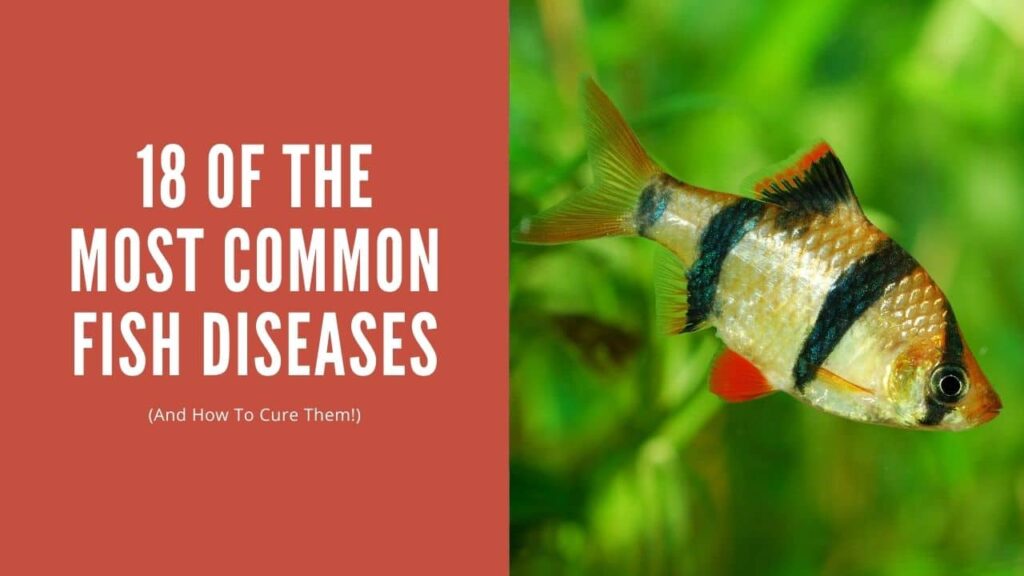
This image is property of aquariumstoredepot.com.
Click here…Your Spirit Animal is Trying to Connect…
Fungal Fish Diseases
Fungal infections in fish are caused by various types of fungi and can affect the fish’s skin, gills, and internal organs. These diseases are often secondary to other underlying health issues, such as parasites or bacterial infections. Prompt identification and treatment are crucial to prevent the progression of the disease.
Saprolegnia
Saprolegnia is a common fungal infection that affects fish, especially those with open wounds or sores. It appears as white cotton-like tufts or patches on the fish’s body and fins. Infected fish may exhibit signs of inflammation, lethargy, and decreased appetite.
To treat Saprolegnia, it is essential to maintain excellent water quality and reduce stress in the fish. Medications like antifungal agents or salt baths can be used to control the fungal infection. Treating the entire aquarium and removing any decaying organic matter can prevent the recurrence of the disease.
Achlya
Achlya, also known as Water Mould, is another fungal infection commonly found in fish. It typically occurs in stagnant or poor water conditions. Infected fish will display cottony growths or layers on their skin and fins, along with signs of inflammation and tissue damage.
To treat Achlya, it is important to improve water circulation and maintain optimal water conditions. Medications like antifungal agents or salt baths can be used to eradicate the fungal infection. Regular water changes and proper filtration can also help prevent the disease.
Branchiomycosis
Branchiomycosis is a fungal infection that primarily affects the fish’s gills. It is caused by the fungus Branchiomyces spp. Infected fish will exhibit swollen or discolored gills, along with signs of respiratory distress, such as gasping at the water surface.
Treating Branchiomycosis involves improving water quality and ensuring proper oxygenation in the aquarium. Medications like antifungal agents or salt baths can be used to control the fungal infection. Removing any dead or decaying fish from the aquarium is essential to prevent the spread of the disease.
Viral Fish Diseases
Viral fish diseases are caused by various types of viruses and can be highly contagious among fish populations. These diseases often have no specific cure, and management focuses on preventing the spread of the virus and minimizing its impact on the fish.
Viral Hemorrhagic Septicemia (VHS)
Viral Hemorrhagic Septicemia (VHS) is a highly contagious viral disease that affects a wide range of fish species. Infected fish will exhibit external symptoms like hemorrhages on the skin, fins, and eyes, along with internal damage to the organs. Fish may also show signs of lethargy, loss of appetite, and erratic swimming patterns.
There is currently no cure for VHS, and infected fish usually do not survive the disease. Prevention is essential to control the spread of the virus. Quarantining new fish, practicing proper hygiene, and maintaining good water quality are crucial measures to protect fish populations from VHS.
Infectious Pancreatic Necrosis (IPN)
Infectious Pancreatic Necrosis (IPN) is a viral disease that primarily affects salmonid fish species, such as trout and salmon. Infected fish will display symptoms like distended abdomen, darkened skin, and exophthalmia (protruding eyes). Mortality rates can be high in affected fish populations.
There is no specific treatment for IPN, and prevention is key to controlling the disease. Following proper biosecurity measures, avoiding overcrowded conditions, and maintaining optimal water quality are essential to reduce the risk of spreading IPN.
Koi Herpesvirus (KHV)
Koi Herpesvirus (KHV) is a viral disease that primarily affects koi and common carp. Infected fish may exhibit symptoms like lethargy, loss of appetite, white or necrotic patches on the skin, and respiratory distress. Mortality rates can be significant in infected fish populations.
There is no cure for KHV, and infected fish usually succumb to the disease. Strict biosecurity measures, such as quarantining new fish, and maintaining optimal water quality are crucial to prevent the spread of KHV. Vaccination may be available in some regions to protect susceptible fish populations.
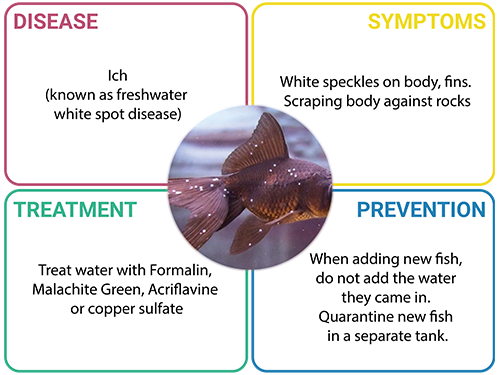
This image is property of primary.jwwb.nl.
Environmental Fish Diseases
Environmental fish diseases are caused by various external factors related to the fish’s habitat and water conditions. These diseases can significantly impact the health and well-being of fish if not properly managed and addressed.
Ammonia Poisoning
Ammonia poisoning occurs when there is a buildup of toxic ammonia in the fish’s aquarium. It can result from overfeeding, high fish population density, or inadequate filtration. Symptoms of ammonia poisoning include gasping for air, red or inflamed gills, and loss of appetite.
Preventing ammonia poisoning involves maintaining excellent water quality and avoiding overfeeding. Regular water changes, proper filtration, and monitoring ammonia levels are crucial to prevent the accumulation of toxic ammonia in the aquarium.
Nitrite Poisoning
Nitrite poisoning is another common environmental fish disease that occurs when there are elevated levels of nitrites in the water. It often develops due to an incomplete nitrogen cycle or when the biological filter is overwhelmed. Symptoms of nitrite poisoning include reduced appetite, rapid breathing, and increased mucus production.
To prevent nitrite poisoning, it is important to establish a well-functioning nitrogen cycle in the aquarium. Regular water testing, maintaining proper filtration, and avoiding overfeeding are key to preventing the accumulation of nitrites. Partial water changes may be necessary to lower nitrite levels if they become elevated.
Low Oxygen Levels
Low oxygen levels in the aquarium can have detrimental effects on fish health and well-being. Oxygen depletion can occur due to various factors, such as inadequate water circulation, high water temperatures, or overcrowding. Fish may exhibit symptoms like gasping at the water surface, lethargy, and reduced appetite.
To address low oxygen levels, it is essential to ensure proper water circulation and aeration in the aquarium. Adding additional aeration devices like air stones or increasing water flow can help maintain adequate oxygen levels. Regular water testing and monitoring fish behavior can also help identify oxygen-related issues.
Nutritional Fish Diseases
Nutritional fish diseases result from imbalances or deficiencies in the fish’s diet. Proper nutrition is essential for the overall health and well-being of fish. When nutritional needs are not met, fish can develop various diseases and health conditions.
Vitamin Deficiencies
Vitamin deficiencies can have significant impacts on fish health. Different vitamins play crucial roles in various physiological processes, and their absence or inadequacy can lead to disorders. Symptoms of vitamin deficiencies in fish can vary depending on the specific vitamin involved.
To prevent vitamin deficiencies, it is important to provide a well-balanced and varied diet for your fish. Commercially available fish food formulated for specific species can often meet the nutritional requirements of most fish. Supplementing with fresh or frozen foods can also provide additional vitamins for optimal fish health.
Fatty Liver Disease
Fatty Liver Disease, also known as Hepatic Lipidosis, occurs when there is an abnormal accumulation of fat in the fish’s liver. It is often associated with improper nutrition and overfeeding. Infected fish may exhibit symptoms like a distended abdomen, pale or discolored liver, and reduced appetite.
Preventing Fatty Liver Disease involves providing a balanced diet and avoiding overfeeding. Feeding fish appropriate portion sizes and selecting high-quality fish food can help prevent excessive fat accumulation in the liver. Regular monitoring of fish behavior and appearance can help identify potential issues.
Malnutrition
Malnutrition occurs when fish are not receiving adequate nutrition to meet their dietary requirements. It can result from poor-quality fish food, improper feeding practices, or disease conditions. Fish suffering from malnutrition may exhibit symptoms like emaciation, reduced growth rates, and weakened immune systems.
To prevent malnutrition, it is crucial to provide a well-balanced and varied diet for your fish. Opt for high-quality fish food that meets the specific nutritional needs of your fish species. Regular feeding schedules and appropriate portion sizes can also help ensure adequate nutrition for your fish.
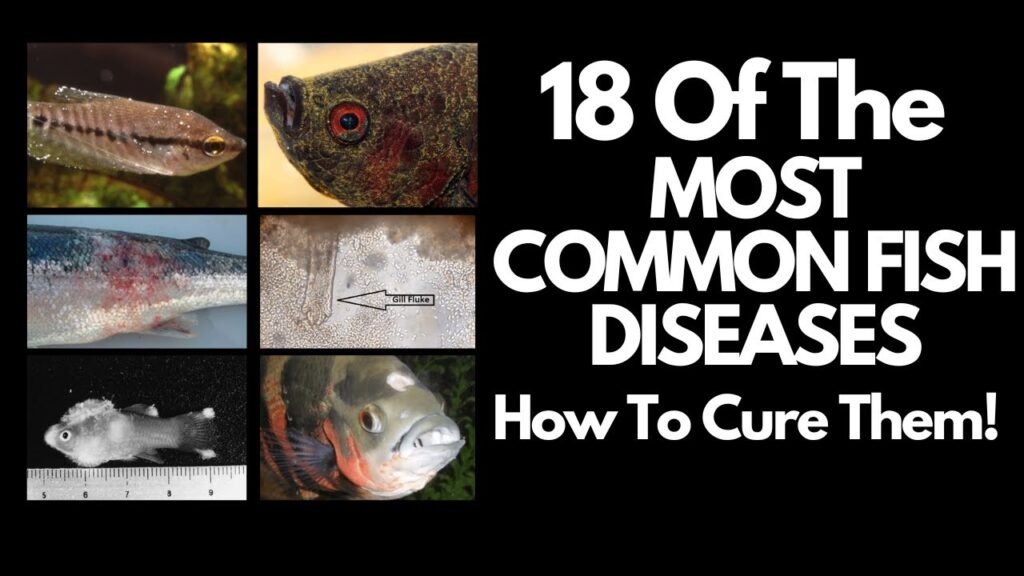
This image is property of i.ytimg.com.
Toxic Fish Diseases
Toxic fish diseases occur when fish are exposed to various harmful substances or toxins in their environment. These substances can come from sources such as heavy metals, chemical contaminants, or pesticides. Managing and minimizing exposure to these toxins is crucial to protect fish health.
Heavy Metal Poisoning
Heavy metal poisoning can occur when fish come into contact with high concentrations of metals like lead, copper, or mercury. These metals can enter the fish’s body through contaminated water or food sources. Symptoms of heavy metal poisoning in fish can include behavioral changes, loss of coordination, and organ damage.
To prevent heavy metal poisoning, it is important to monitor and maintain water quality. Regular water testing and ensuring a clean and healthy environment for your fish can help reduce the risk of exposure to heavy metals. Avoid using materials or substances that may contain heavy metals in your aquarium.
Chemical Contaminants
Chemical contaminants, such as pesticides or industrial pollutants, can have detrimental effects on fish health. These contaminants can enter the aquarium through various sources, including treated water, improper use of chemicals, or nearby pollution. Symptoms of chemical contamination in fish can range from behavioral changes to organ damage.
Preventing chemical contamination involves using caution when introducing new substances into the aquarium. Only use chemicals or treatments that are specifically formulated for use in fish tanks. Regular water testing and maintaining good water quality can help identify and reduce chemical contaminants.
Pesticide Toxicity
Pesticide toxicity can occur when fish come into contact with pesticides or insecticides that are not safe for aquatic environments. This can happen when these substances are used near fish tanks or when contaminated water is added to the aquarium. Symptoms of pesticide toxicity in fish can include respiratory distress, skin ulcers, and organ damage.
To prevent pesticide toxicity, it is important to be cautious about introducing any water or substances into the aquarium. Avoid using pesticides or insecticides near fish tanks or sources of water that may be used for the aquarium. Quarantining and treating new fish with appropriate treatments can also help reduce the risk of pesticide toxicity.
Genetic Fish Diseases
Genetic fish diseases are caused by inherited genetic abnormalities and can be present from birth or develop as the fish grows. These diseases can have various effects on fish health and may require special care and management techniques.
Scoliosis
Scoliosis is a genetic condition characterized by an abnormal curvature of the fish’s spine. It can affect fish of various species and can range from mild to severe. Fish with scoliosis may exhibit uneven swimming patterns, difficulty maintaining balance, and skeletal deformities.
Managing scoliosis involves providing appropriate tank conditions and minimizing stress for affected fish. Ensuring optimal water quality, temperature, and nutrition can help support the overall health of fish with scoliosis. Regular monitoring and observation can help identify any changes or progression in the condition.
Hermaphroditism
Hermaphroditism is a genetic condition where an individual fish possesses both male and female reproductive organs. It can occur in various fish species and may result in irregular sexual behavior or fertility issues. The presence of hermaphroditism can vary from partial to complete, depending on the fish.
Managing hermaphroditism involves providing a suitable tank environment and carefully observing affected fish. Regular monitoring and observation can help track any changes in behavior or reproductive patterns. Consulting with a knowledgeable fish veterinarian or specialist can provide further guidance on managing hermaphroditic fish.
Swim Bladder Disorder
Swim Bladder Disorder is a genetic condition that affects the fish’s swim bladder, an organ responsible for buoyancy control. Infected fish may exhibit difficulty swimming, floating at the water surface, or sinking to the bottom of the tank. Swim Bladder Disorder can occur in various fish species and can vary in severity.
While there is no specific cure for Swim Bladder Disorder, there are management techniques that can help affected fish. Providing appropriate tank conditions, such as proper water depth, temperature, and filtration, can improve the fish’s ability to control its buoyancy. Adjusting the fish’s diet and feeding practices can also help alleviate symptoms.
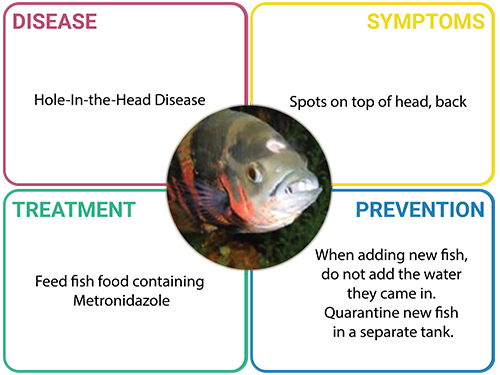
This image is property of primary.jwwb.nl.
External Fish Diseases
External fish diseases are those that primarily affect the fish’s external body, including the skin, fins, and scales. These diseases can be caused by various factors, such as parasites, bacteria, or fungi. Prompt identification and treatment are crucial to prevent the spread of these diseases.
Fish Fungus
Fish Fungus, also known as Saprolegnia, is a common external fungal infection in fish. It appears as white fluffy growths or cotton-like tufts on the fish’s body, fins, and scales. Infected fish may exhibit signs of irritation, inflammation, and reddening of the affected areas.
To treat Fish Fungus, it is important to maintain excellent water quality and reduce stress in the fish. Medications like antifungal agents or salt baths can be used to control the fungal infection. Treating the entire aquarium and removing any decaying organic matter can prevent the recurrence of the disease.
Ulcers
Ulcers are open wounds or sores on the fish’s body that can occur due to various factors, including bacterial or fungal infections, parasites, or physical injuries. Infected fish will exhibit visible wounds, often accompanied by inflammation and tissue damage.
Treating ulcers depends on the underlying cause of the wounds. Identifying and addressing the root cause, such as controlling bacterial or fungal infections, is crucial to promote healing. Mild antiseptics or topical treatments can be used to clean and treat the ulcers. Ensuring optimal water quality is essential to prevent the spread of infection.
Tail and Fin Rot
Tail and Fin Rot, also known as tail rot or fin rot, is a common external fish disease that affects the fins and tail. It is often caused by bacterial or fungal infections, poor water conditions, or physical trauma. Infected fish will display frayed, disintegrating fins or tail, along with signs of inflammation and discoloration.
To treat Tail and Fin Rot, it is essential to isolate the infected fish and treat the entire aquarium. Medications like antibiotics or antifungal agents can be used to control the bacterial or fungal infection. Improving water quality, removing any decaying organic matter, and maintaining stress-free conditions can aid in the healing process.
Internal Fish Diseases
Internal fish diseases are those that primarily affect the fish’s internal organs and systems. These diseases can be caused by various factors, such as bacterial infections, parasites, or genetic abnormalities. Proper diagnosis and treatment are essential to manage these diseases effectively.
Dropsy
Dropsy, also known as Pinecone Disease, is a severe internal bacterial infection that affects the fish’s internal organs. It is characterized by the swelling of the fish’s abdomen, along with raised scales that resemble a pinecone. Infected fish may also appear lethargic, lose their appetite, and have trouble swimming.
Unfortunately, there is no specific cure for Dropsy, and treating it can be challenging. Isolating the infected fish and maintaining optimal water conditions are crucial to prevent the spread of the disease. Medications like antibiotics may be used to control the bacterial infection, but the chances of successful treatment are often low.
Tuberculosis
Fish Tuberculosis, also known as Mycobacteriosis, is a chronic bacterial disease that affects various fish species. It is caused by the bacteria Mycobacterium spp. Infected fish may exhibit symptoms like emaciation, lethargy, spinal deformities, and ulcerations.
There is no cure for Fish Tuberculosis, and infected fish usually do not survive the disease. Prevention is essential to control the spread of the bacteria. Maintaining excellent water quality, quarantining new fish, and practicing proper hygiene are crucial measures to protect fish populations from Fish Tuberculosis.
Fish Tuberculosis
Fish Tuberculosis is a term used to refer to mycobacterial infections in fish. It is caused by various species of Mycobacterium bacteria, which can affect several fish species. Infected fish may exhibit symptoms like weight loss, skeletal deformities, and chronic lethargy.
Treating Fish Tuberculosis is challenging, and there is no specific cure available. Managing the disease involves isolating infected fish, maintaining optimal water conditions, and preventing stress. Appropriate nutrition and supportive care can help improve the overall well-being of fish affected by Fish Tuberculosis.


